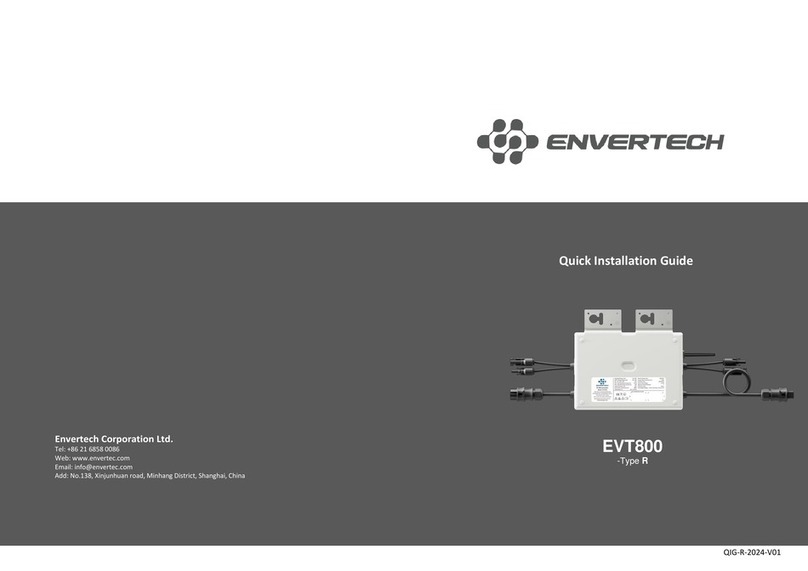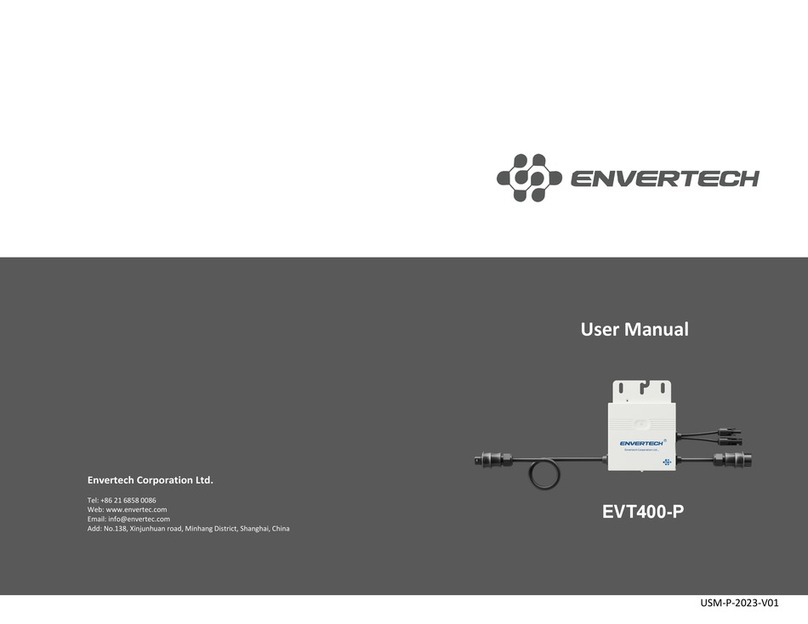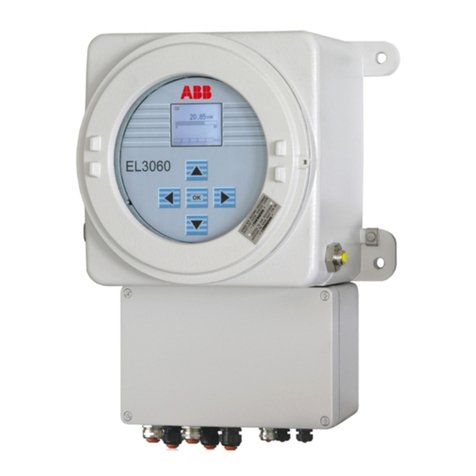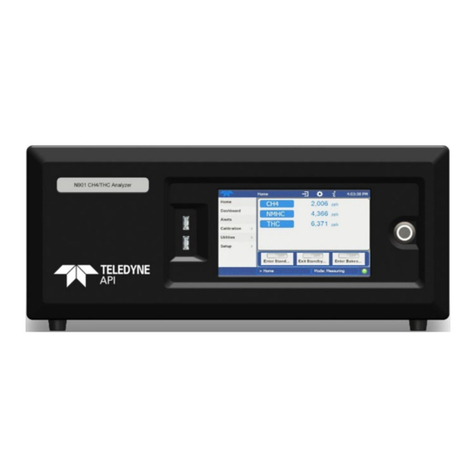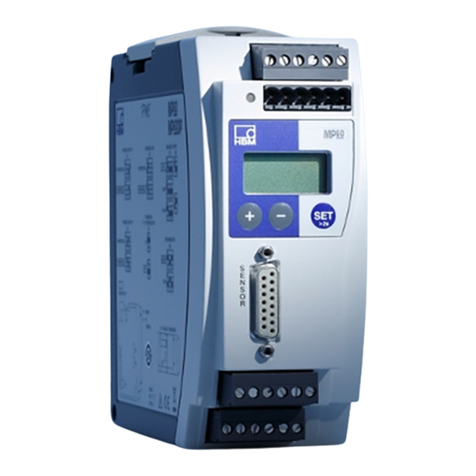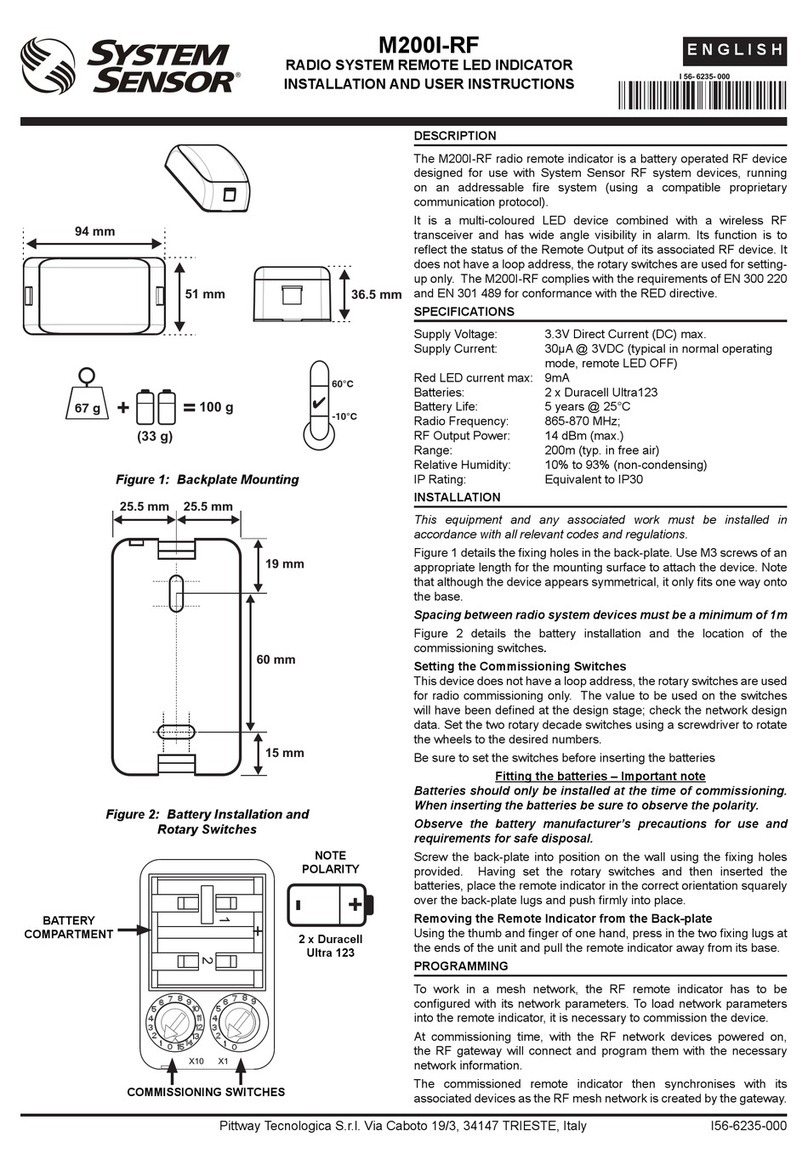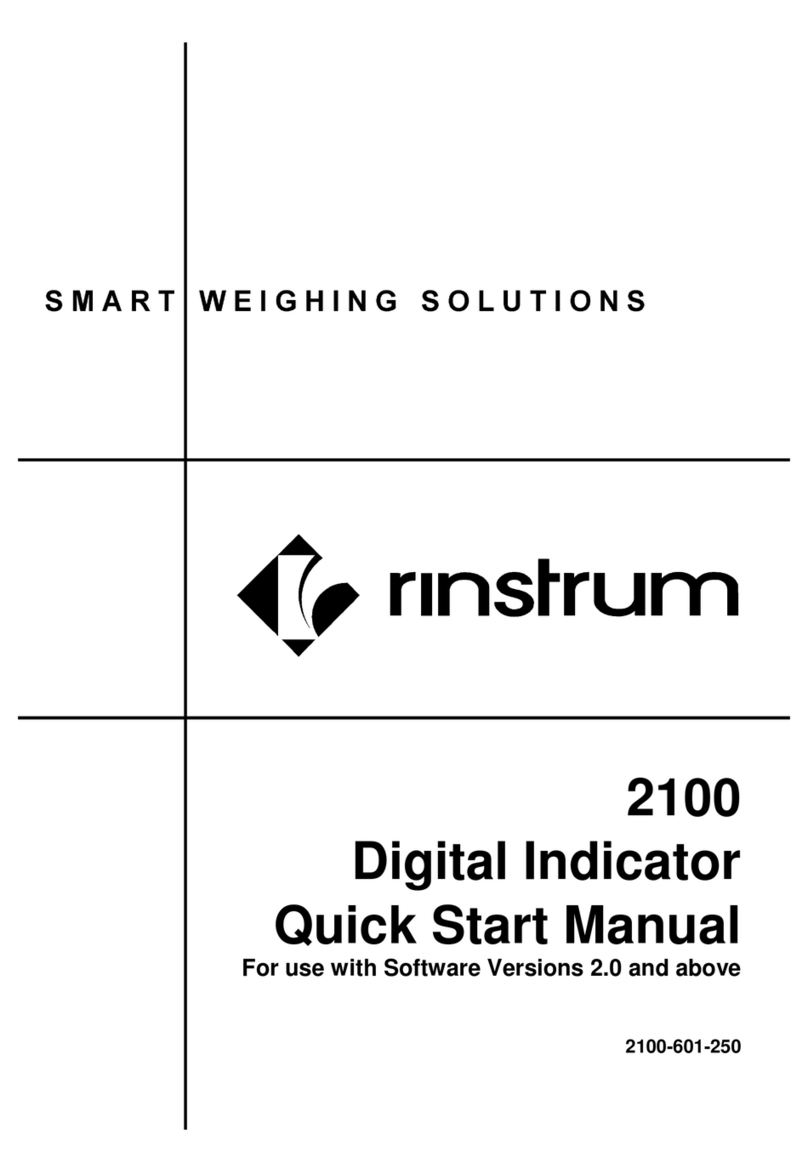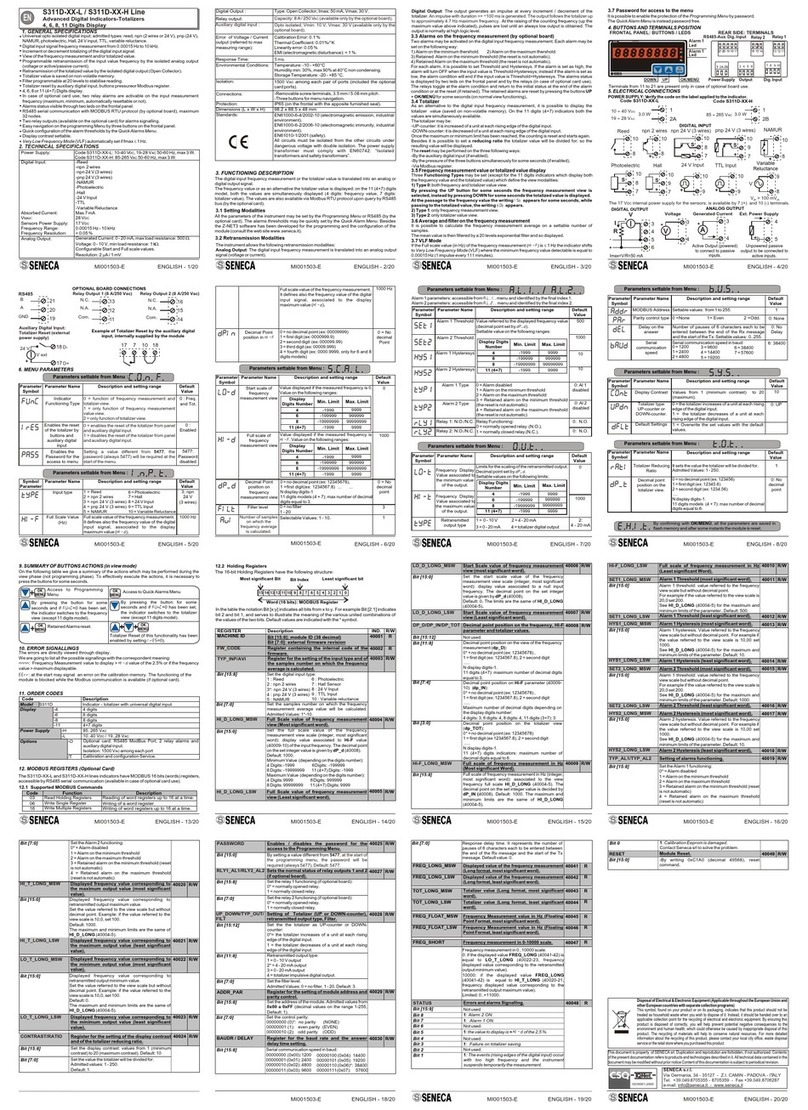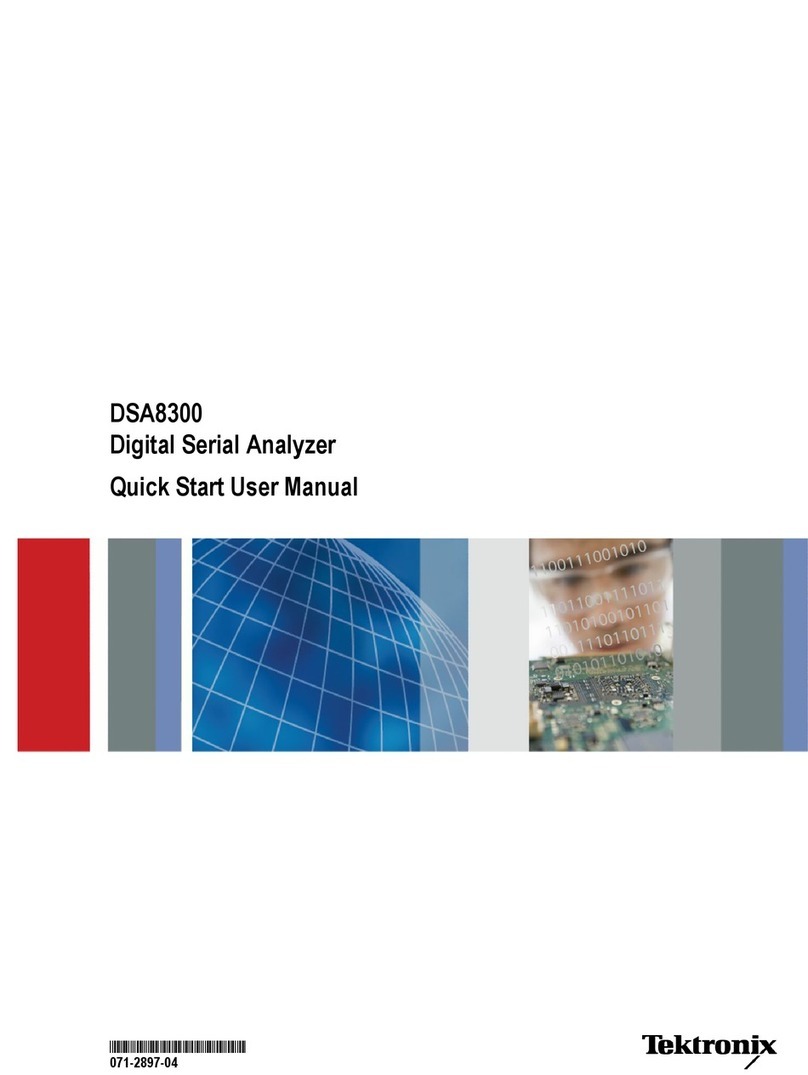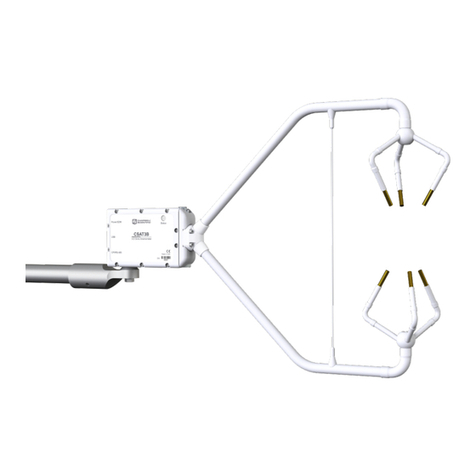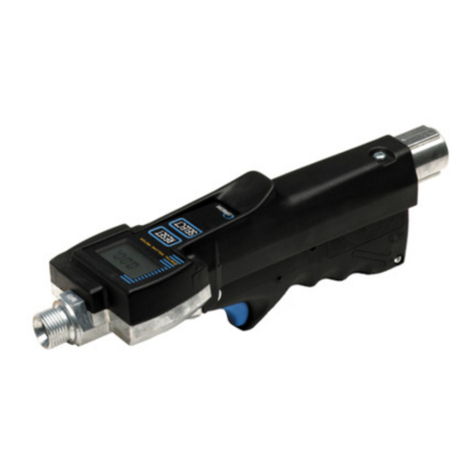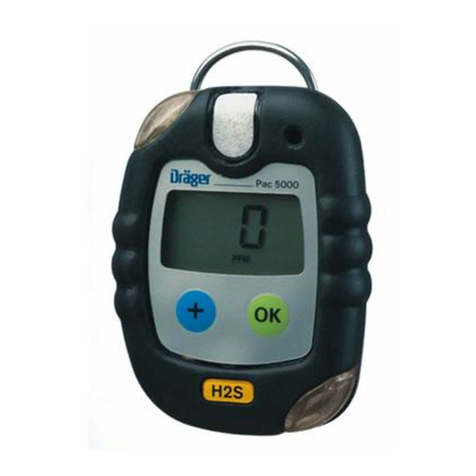Envertech EVB300 Operation instructions

Zhejiang Envertech Corporation Ltd.
Tel:+86 579 8926 6326
Email:[email protected]
Add:24th Floor, Jintong Mansion,
Center of Headquarters, Yongkang City,
Zhejiang Province, China
User Operating Manual
Model Number: EVB300
Zhejiang Envertech Corporation Ltd.
All rights reserved

Content
1. Overview............................................................................................
1.1 Brief Introduction.............................................................................................
1.2 Features............................................................................................................
1.3 Key Equipments..............................................................................................
2 Installation Guide.............................................................................
2.1 Package list......................................................................................................
2.2 Interface Layout ..............................................................................................
2.3 Technical parameters.....................................................................................
3 Installation........................................................................................
3.1 Preparation...........................................................................................
3.2 System Diagram..............................................................................................
3.3 Installation steps..............................................................................................
3.4 Internet Connection........................................................................................
3.5 Add MI................................................................................................................
4 Main Functions.................................................................................
4.1 Register a New Account......................................................................
4.2 EnverPortal Monitoring System.........................................................
4.2.1 Overview Page..................................................................................
4.2.2 Real-time Monitoring..........................................................................
4.2.3 Historical Data...................................................................................
4.2.4 Add devices.......................................................................................
4.3 EnverView App...................................................................................
4.3.1 Monitor Interface................................................................................
4.3.2 History data inquiry............................................................................
4.3.3 Settings..............................................................................................
4.3.4 Others................................................................................................
5 Basic operations..............................................................................
5.1 Safety Checks....................................................................................
5.2 Maintain Periodically..........................................................................
6 About Us...........................................................................................
7 Attachments.....................................................................................
1
1
1
1
1
1
2
2
2
3
4
4
5
7
9
9
9
9
10
10
10
11
11
11
12
20
20
20
20
21
21

2.2 Interface Layout
12
1 Overview
2 Structure
1.1 Brief Introduction
1.2 Features
The monitoring device EVB300 is the interaction interface of microinverters, which can
effectively communicate with any Envertech microinverter and remote control the
Envertech microinverter. Users can have access to data and precise analysis through a
simple, flexible and convenient way. You can have access to of each inverter and
module in your solar system with our EnverPortal and EnverView app. The user-friend-
ly interface lets you manage your solar system in real time.
3 Years Warranty
Power Line Communication Simple Installation and Operation
IP48 Protection Rating (Indoor)
Real-time Monitoring and remote control through Website & App
Local data storage
Microinverter
Monitoring Device EVB300
Smart Monitoring Webportal- EnverPortal
Smart Monitoring Application- EnverView
1.3 Key Equipments
2.1 Package List
No. Description Description
1
2
3
4
5
6
7
8
9
10
11
Antenna mounting hole
Reset hole
Mode light
Network light
Status light
Power connection port
3-phase electrical interface
Current sampling interface
Ethernet port
RS485 port
USB port
Mount antenna in the hole.
Reset EVB300
When EVB300 works under different model,
corresponding light blinks.
This light will be on When the EVB300 connects
to the sever.
This light will be on When the EVB300 works well.
The power connection port connects power
through the power adapter.
To plug in 3-phase electricity.
To plug current sampling sensors.
This port allows the EVB300 to communicate with
the Envertech sever.
Virtual communication port, used for commu-
nication and control between RS485 equipment
and EVB300.
Plug USB disk to record local data.
Component Quantity Description
1
2
3
4
5
6
7
8
1
1
1
2
1
1
1
1
EVB300
Networking Cable
Power Cable
Expansion screws
Hexagon wrench
Ejection pin
Antenna protection cap
Antenna
Monitoring device.
Connect to the router.
Provide power for EVB300.
For mounting EVB300 on the wall.
Unscrew the front cover.
To reset EVB300.
To protect antenna hole.
Enhance wireless signal of EVB300.
1 2
3
6 7 8 9 10 11
4
5

3 4
3 Installation
3.1 Preparation
2.3 Technical Parameters
Model
Features
Communication Method
Monitor mode
Ethernet Connection
Wireless Communication
Applicable Voltage
Storage (Optional)
Power Control (Optional)
RS485 Port
AC Supply
Power Consumption
Dimensions (W*H*D)
Weight
Cooling
Ambient Temperature Range
Ingress Protection (IP)
Compliance
Warranty
108~264VAC, 47.5~62.0Hz
3 W
PLCC (Power Line Carrier Communication)
Real-time data monitored and remote control on app
TCP/IP
WIFI (802.11g/n)
Single Phase / Three-Phase
USB Local Storage
Automatic Control of Power Output
Virtual communication port, used for communication
and control between RS485 equipment and EVB300.
172mm*100mm*45.5mm
750 g
Natural Convection- No Fans
-40℃~+65℃
IP40
CE
3 Years
Interface
Capacity
Number of Devices Connected
Mechanical Data
AC Supply/Consumption
EVB300
Up to 60 Units of PV Modules in total
3.2 System Diagram
(1) Ethernet Mode
3.3 Installation Steps
Note: When mounting the EVB300 to a wall, make sure to select a cool, dry indoor
location.
Step1. Screw on the antenna.
Step2. Drill two holes on the wall surface (10cm apart), then insert 2 mounting screws.
(2) Wireless (Wi-Fi) Mode
Make sure you have the following components ready before beginning to
install the EVB300:
An AC electrical outlet (connected to microinverter).
A steady Internet connection (CAT5 Ethernet, or a wireless router).
A computer/cellphone.

5 6
3.4 Internet Connection
(1) Wireless Mode
A. Cellphone Configuration
B. Computer Configuration
a. Connect the monitor to the power supply.
b. Connect network whose name is same as your EVB SN.
c. Use a browser to open the webpage: http://10.10.100.254/, and login the account
(username: admin and password: admin).
d. Click "Wi-Fi Setting" for relevant configuration:
As shown in the figure above, enter the Wi-Fi name at "1", or click the search button
to select the corresponding Wi-Fi name.
e. After the above operation, click save.
b. Open EnverView and click Wi-Fi
Setting.
a. Connect network whose name is as
same as your monitor’s SN in your
cellphone.
c. Click the magnifying glass icon.
e. Enter the password, finally click the
OK button.
d. Select the WiFi monitor need to
connect.
Step3. Align and slide the EVB300 onto the mounting screws.
Wait 3 minutes and you can start the operation after booting EVB300.
Note: Please ensure that both EVB300 and your cellphone are in same

7 8
3.5 Add MI:
Note: Please ensure that both EVB300 and your cellphone are in same router
network.
Step1. Launch EnverView app, enter Local Mode. Connect your EVB300.
Step2. On EVB OverView page, enter Settings. Click Add MI you could choose enter MI
SN manually or click the grid icon to scan the MI SN automatically.
Step3. Click confirm to finish Adding MIs.
A. Make sure the LAN cable is connected to the network port on the bottom of the
EVB300.
B. Connect the LAN cable to a spare port on the router.
(2) Direct LAN Cable Connection.
Or you can Scan the bar code.
f. Click the "restart" button and wait for 5s. The interface is shown as follows
Note: if more than one monitor needs to connect Wi-Fi, configure one monitor first
and change its network name to the monitoring number to avoid network configura-
tion conflicts.

9 10
4 Main Functions
By the Power Line Carrier Communication (PLCC) technology, EVB300 collects power
generation data from the microinverter, and transmits to the EnverPortal database.
Correspondingly, user can also manage his own devices through EnverPortal or
EnverView app.
EnverPortal, an intelligent monitoring system developed by Envertech, monitors the
performance of the whole Envertech microinverter system as well as that of every
module in the system. New users need to register an account.
Registration address: www.envertecportal.com
Click “Next”, and create a power station.
4.1 Register a New Account
Smart Monitoring Web portal——EnverPortal, for single power station.
4.2 EnverPortal Monitoring System
4.2.1 Overview Page
Click “Real-time” button to enter the real time data page.
4.2.2 Real-time Monitoring
Click “History” to enter the data graphs page.
4.2.3 Historical Data
Select “Settings”→ “System Info”→ “Device Manager”, and click “Add” to
enter the interface.
Enter the correct SN of EnverBridge in the popup box and click “OK”.
4.2.4 Add Devices

11 12
Monitor Interface and Features.
EVB300 is a smart internet monitor device, all operations can be done on the
cellphone app.
Here you can see the power curve of the day, the month, the year and the total corre-
sponding to the date you select. Put your fingertip on the curve and the data at that
time point will be displayed.
4.3 EnverView App
Insert an USB disk into EVB300 before using this function.
4.3.2 History Data Inquiry
Under “Settings”, you can edit this system and manage its devices.
(1) Add MI
Click Add MI on the upper right of the screen to add your microinverter.
4.3.3 Settings
(1) After logging in the app, you will
reach the interface below.
(2) The real-time data of the whole
system is displayed in this interface:
A. Grid voltage of each phrase
B. Real-time consumption of each
phrase
C. Total energy of all microinverters on
each phase
D. Real-time output power of all micro-
inverters on each phase
E. LAN IP of the device
F. Serial number of the device
G. On the top of the interface, the
number of the devices online are on
display.
(3) Click the “>”icon. (4) You can see your devices list and
EVB real-time data below.
4.3.1 Monitor Interface

13 14
(2) Restart EVB
Select Restart EVB and click Confirm, your device will restart in 3 minutes.
(4) Password (Distributor)
A. Password is required for first login,
default password: 123456.
B. Then input the origin password and
new password.
(5) Parameter Setting (Distributor)
A. MI Safety Param
Introduction:
Each micronvert appearance has an initial safety regulation, which is not applicable
to all countries, so the safety regulations are set to meet the standards of each
country.
Operation Steps:
Step1. Select Safety Param Selection
(3) Upgrade
Introduction: When a new version is released, the firmware can be upgrade remotely.
Operation Steps:
A. Select Upgrade.
B. Click “+” button on the up right
corner, then click download.
C. After the file downloaded, click
upgrade button.
Click “+” to add a new microinverter under the EnverBridge. The SN of the microin-
verter can be typed into the input box, or you can click the barcode icon and scan the
barcode on the microinverter. Click “Confirm” to finish adding the MI. This added
MI will be in the microinverter list then.
Step2. here are many countries you
can choose and a default SafetyParam
for all countries in the end.

15 16
B. Standard Setting
a. Reactive Power Control
Introduction:
Generally, there are active power and reactive power in a power system, so we could
use this function to modify the power factor to improve the efficiency of the whole
system. And this function will have no effect on the output energy.
Operation Steps:
Step1. Open Setting
a) Auto Control
With Auto control, the system will adjust the reactive power according to the real-time
active power automatically.
b) Manual Control
First need to select Manual control to set manual control;
Then select power factors that you need;
There are leading power factors: +0.99, +0.98, +0.97, +0.96 and +0.95;
Lagging power factors: -0.99, -0.98, -0.97, -0.96, and -0.95.
Note: The default setting of power factor is 1.
Step2. Select Parameter setting
Step3. Enter Standard Selection
Step4.
Select VDE 4105 then enter Reactive
Power Control
Step5. Enter Reactive Settings, you will
see 3 selections below.
c) Response Time
There are 7 Time selections: 6s, 10s, 20s, 30s, 40s, 50s, and 60s.
At present, only 6s, 10s and 60s can be used;
Each selection reveals the time from Reactive power setup to the designated setting.

17 18
b. Output Power Control
Introduction: If users don’t want to transmit all electricity that microinverter system
generated to the grid. They could proceed this function to modify the percentage of
the electricity we want to transmit to the grid.
Operation Steps:
Select VDE 4105 then enter Power Setting
c. Frequency Setting
Introduction:
To reduce the impact of frequency fluctuation from the power system, microinverter
will reduce the output power once detecting the over frequency.
Operation Steps:
Step1. Select VDE 4105 then enter Frequency setting
d. Grid Power Control
Introduction:
In order to control the power generation and prevent over generation, the power
generation can be controlled by the power control of the grid. There are two control
modes here. Manual control can control the power by setting the upper limit of
A.B.C three-phase power; automatic control can limit the power uploaded to the grid
by setting the upper limit of A.B.C three-phase power.
Operation Steps:
Step1. Enter Grid Power Control
Step3. Select the frequency value, then the Overfrequency function will reduce
power when the frequency reach the setting value.
Step2. Enter Frequency setting
There are frequency settings.
There are several power percentage options: 10%, 20%, 30%, 40%, 50%, 60%, 70%,
80%, 90% and 100%. Choose the proper value you want.
Note: If the real-time output power is 600W and you choose the 20% selection, then
after setup the output power would turn to 600W x 20% = 120W.
Step3. Enter Safety Param Selection
There are two control modes here. Input the upper power limit you need and click

19 20
Here user could set the maximum power for each phase. For example, if the user sets
the power value on phase A to 600W on app, and a microinverter with 2 DC inputs is
connected to phase A, then each MPPT can send a maximum of 600W/2 = 300W
power; if there are 2 microinverters with 2 DC inputs, each MPPT on phase A can
generate a maximum of 600W/4 = 150W.
Note: If the user set the Automatic control in the Grid power control panel and
haven’t switched to the Manual control. Even if a specific power percentage is set in
the parameter setting >>>standard selection>>>Power Setting, firstly the microin-
verter will generate power according to the specific power set, but the maximum
microinverter power will be re-adjusted according to the value of Automatic control
in about 5 minutes.
Step2. Click confirm button.
4.3.4 Others
To know more about EnverView, please refer to EnverView App User Guide (End User)
on our website www.envertec.com
5.1 Safety Checks
Safety checks should be performed at least every 12 months by manufacturer’s
qualified person who has adequate training, knowledge, and practical experience to
perform these checks. The data should be recorded in an equipment log. If the device
is not functioning properly or fails in any of the tests, the device has to be repaired.
NOTE
The “Note” mark in this manual indicates important
product information.
WARNING
Do not attempt to repair the Envertech monitoring
device without authorization, because it does not
contain parts available for users to repair. If the microin-
verter fails, please contact Envertech customer service.
5.2 Maintain Periodically
For more information of safety checks, please see below the three safety instructions
of this manual.
Step3. Enter Safety Param Selection
There are two control modes here. Input the upper power limit you need and click
5 Basic operations
WARNING
Please ensure that all power is off and there is no electric
current when connecting Envertech monitoring device.
!
!
D. AD Sampling Calibration
Introduction:
In order to ensure the accuracy of sampling, it is necessary to calibrate the sensor for
the first time to ensure the accuracy of zero current voltage, so that the difference
between sampling voltage and zero current voltage is accurate, and determine the
current size according to the scale table corresponding to the sensor. Generally, it only
needs to be calibrated once, and then it doesn't need to be recalibrated.
Operation Step:
Step1. Enter AD Sampling Calibration

21 22
Zhejiang Envertech Corporation Ltd.
Tel: 0086-0579 89266326
Add: 24th Floor, Jintong Mansion, Center of Headquarters, YongKang City, Zhejiang
Province, China
Email: [email protected]; [email protected]
Web: www.envertec.com
1. Single Phase
2. Three Phase
Unscrew the front cover with the complimentary hex screwdriver, then plug wires on
each phase into the corresponding connector of EVB300.
Power cord
socket
Baffle plate
6 About Us
7 Attachments
5
7
4
6
2
11
length 1839 mm length 2100 mm
12
Operatingrange(Vdc):
MPPTVoltageRange(Vdc):
Max.DCinput(Vdc):
Max.inputcontinuous c urrent (A):
Max.inputshort-ci rcuit current(A):
Ingressprotection(IP):
Power(Max.continuous) (W):
Temperature(¡æ):
18V~54V
24V~45V
54V
12Ax2
15A
IP67
720W
-40¡æto+65¡æ
NormalVoltage(Vac):
Current(Max.continuous) (A):
Frequency(Hz):
PowerFactorRange:
Maximumunitsperbranch:
Protectiveclass:
Overvoltagecategory:
220/230V
3.27A
50Hz/60Hz
+/-0.95
7
OVCIII(ACMain ) , OVCII(PV)
ZhejiangEnvertech C o r p o r ationLtd .
www.envertec.com
Model£ºEVT720
PVMicroinverter UserIdentification Number
ClassI
2
11
12
Operatingrange(Vdc):
MPPTVoltageRange(Vdc):
Max.DCinput(Vdc):
Max.inputcontinuous c urrent (A):
Max.inputshort-ci rcuit current(A):
Ingressprotection(IP):
Power(Max.continuous) (W):
Temperature(¡æ):
18V~54V
24V~45V
54V
12Ax2
15A
IP67
720W
-40¡æto+65¡æ
NormalVoltage(Vac):
Current(Max.continuous) (A):
Frequency(Hz):
PowerFactorRange:
Maximumunitsperbranch:
Protectiveclass:
Overvoltagecategory:
220/230V
3.27A
50Hz/60Hz
+/-0.95
7
OVCIII(ACMain ) , OVCII(PV)
ZhejiangEnvertech C o r p o r ationLtd .
www.envertec.com
Model£ºEVT720
PVMicroinverter UserIdentification Number
ClassI
2
11
12
Operatingrange(Vdc):
MPPTVoltageRange(Vdc):
Max.DCinput(Vdc):
Max.inputcontinuous c urrent (A):
Max.inputshort-ci rcuit current(A):
Ingressprotection(IP):
Power(Max.continuous) (W):
Temperature(¡æ):
18V~54V
24V~45V
54V
12Ax2
15A
IP67
720W
-40¡æto+65¡æ
NormalVoltage(Vac):
Current(Max.continuous) (A):
Frequency(Hz):
PowerFactorRange:
Maximumunitsperbranch:
Protectiveclass:
Overvoltagecategory:
220/230V
3.27A
50Hz/60Hz
+/-0.95
7
OVCIII(ACMain ) , OVCII(PV)
ZhejiangEnvertech C o r p o r ationLtd .
www.envertec.com
Model£ºEVT720
PVMicroinverter UserIdentification Number
ClassI
length 261 mm
3
Microinverter(n=10)
6
7
4
5
8
2
11
length 1839 mm length 2100 mm
12
Operatingrange(Vdc):
MPPTVoltageRange(Vdc):
Max.DCinput(Vdc):
Max.inputcontinuouscurrent(A):
Max.inputshort-circuitcurrent(A):
Ingressprotection(IP):
Power(Max.continuous)(W):
Temperature(¡æ
18V~54V
24V~45V
54V
12Ax2
15A
IP67
720W
-40¡æto+65¡æ
NormalVoltage(Vac):
Current(Max.continuous)(A):
Frequency(Hz):
PowerFactorRange:
Maximumunitsperbranch:
Protectiveclass:
Overvoltagecategory:
220/230V
3.27A
50Hz/60Hz
+/-0.95
7
OVCIII(ACMain), OVC II ( PV)
ZhejiangEnvertechCorporationLtd.
www.envertec.com
Model£ºEVT720
PVMicroinverter UserId e n t i f i c a tion Number
ClassI
2
11
12
Operatingrange(Vdc):
MPPTVoltageRange(Vdc):
Max.DCinput(Vdc):
Max.inputcontinuouscurrent(A):
Max.inputshort-circuitcurrent(A):
Ingressprotection(IP):
Power(Max.continuous)(W):
Temperature(¡æ
18V~54V
24V~45V
54V
12Ax2
15A
IP67
720W
-40¡æto+65¡æ
NormalVoltage(Vac):
Current(Max.continuous)(A):
Frequency(Hz):
PowerFactorRange:
Maximumunitsperbranch:
Protectiveclass:
Overvoltagecategory:
220/230V
3.27A
50Hz/60Hz
+/-0.95
7
OVCIII(ACMain), OVC II ( PV)
ZhejiangEnvertechCorporationLtd.
www.envertec.com
Model£ºEVT720
PVMicroinverter UserId e n t i f i c a tion Number
ClassI
2
11
12
Operatingrange(Vdc):
MPPTVoltageRange(Vdc):
Max.DCinput(Vdc):
Max.inputcontinuouscurrent(A):
Max.inputshort-circuitcurrent(A):
Ingressprotection(IP):
Power(Max.continuous)(W):
Temperature(¡æ
18V~54V
24V~45V
54V
12Ax2
15A
IP67
720W
-40¡æto+65¡æ
NormalVoltage(Vac):
Current(Max.continuous)(A):
Frequency(Hz):
PowerFactorRange:
Maximumunitsperbranch:
Protectiveclass:
Overvoltagecategory:
220/230V
3.27A
50Hz/60Hz
+/-0.95
7
OVCIII(ACMain), OVC II ( PV)
ZhejiangEnvertechCorporationLtd.
www.envertec.com
Model£ºEVT720
PVMicroinverter UserId e n t i f i c a tion Number
ClassI
length 261 mm
3
2
11
length 1839 mm length 2100 mm
12
Operatingrange(Vdc):
MPPTVoltageRange(Vdc):
Max.DCinput(Vdc):
Max.inputcontinuouscurrent(A):
Max.inputshort-circuitcurrent(A):
Ingressprotection(IP):
Power(Max.continuous)(W):
Temperature(¡æ
18V~54V
24V~45V
54V
12Ax2
15A
IP67
720W
-40¡æto+65¡æ
NormalVoltage(Vac):
Current(Max.continuous)(A):
Frequency(Hz):
PowerFactorRange:
Maximumunitsperbranch:
Protectiveclass:
Overvoltagecategory:
220/230V
3.27A
50Hz/60Hz
+/-0.95
7
OVCIII(ACMain), OVC II ( PV)
ZhejiangEnvertechCorporationLtd.
www.envertec.com
Model£ºEVT720
PVMicroinverter UserId e n t i f i c a tion Number
ClassI
2
11
12
Operatingrange(Vdc):
MPPTVoltageRange(Vdc):
Max.DCinput(Vdc):
Max.inputcontinuouscurrent(A):
Max.inputshort-circuitcurrent(A):
Ingressprotection(IP):
Power(Max.continuous)(W):
Temperature(¡æ
18V~54V
24V~45V
54V
12Ax2
15A
IP67
720W
-40¡æto+65¡æ
NormalVoltage(Vac):
Current(Max.continuous)(A):
Frequency(Hz):
PowerFactorRange:
Maximumunitsperbranch:
Protectiveclass:
Overvoltagecategory:
220/230V
3.27A
50Hz/60Hz
+/-0.95
7
OVCIII(ACMain), OVC II ( PV)
ZhejiangEnvertechCorporationLtd.
www.envertec.com
Model£ºEVT720
PVMicroinverter UserId e n t i f i c a tion Number
ClassI
2
11
12
Operatingrange(Vdc):
MPPTVoltageRange(Vdc):
Max.DCinput(Vdc):
Max.inputcontinuouscurrent(A):
Max.inputshort-circuitcurrent(A):
Ingressprotection(IP):
Power(Max.continuous)(W):
Temperature(¡æ
18V~54V
24V~45V
54V
12Ax2
15A
IP67
720W
-40¡æto+65¡æ
NormalVoltage(Vac):
Current(Max.continuous)(A):
Frequency(Hz):
PowerFactorRange:
Maximumunitsperbranch:
Protectiveclass:
Overvoltagecategory:
220/230V
3.27A
50Hz/60Hz
+/-0.95
7
OVCIII(ACMain), OVC II ( PV)
ZhejiangEnvertechCorporationLtd.
www.envertec.com
Model£ºEVT720
PVMicroinverter UserId e n t i f i c a tion Number
ClassI
length 261 mm
3
2
11
length 1839 mm length 2100 mm
12
Operatingrange(Vdc):
MPPTVoltageRange(Vdc):
Max.DCinput(Vdc):
Max.inputcontinuouscurrent(A):
Max.inputshort-circuitcurrent(A):
Ingressprotection(IP):
Power(Max.continuous)(W):
Temperature(¡æ
18V~54V
24V~45V
54V
12Ax2
15A
IP67
720W
-40¡æto+65¡æ
NormalVoltage(Vac):
Current(Max.continuous)(A):
Frequency(Hz):
PowerFactorRange:
Maximumunitsperbranch:
Protectiveclass:
Overvoltagecategory:
220/230V
3.27A
50Hz/60Hz
+/-0.95
7
OVCIII(ACMain), OVC II ( PV)
ZhejiangEnvertechCorporationLtd.
www.envertec.com
Model£ºEVT720
PVMicroinverter UserId e n t i f i c a tion Number
ClassI
2
11
12
Operatingrange(Vdc):
MPPTVoltageRange(Vdc):
Max.DCinput(Vdc):
Max.inputcontinuouscurrent(A):
Max.inputshort-circuitcurrent(A):
Ingressprotection(IP):
Power(Max.continuous)(W):
Temperature(¡æ
18V~54V
24V~45V
54V
12Ax2
15A
IP67
720W
-40¡æto+65¡æ
NormalVoltage(Vac):
Current(Max.continuous)(A):
Frequency(Hz):
PowerFactorRange:
Maximumunitsperbranch:
Protectiveclass:
Overvoltagecategory:
220/230V
3.27A
50Hz/60Hz
+/-0.95
7
OVCIII(ACMain), OVC II ( PV)
ZhejiangEnvertechCorporationLtd.
www.envertec.com
Model£ºEVT720
PVMicroinverter UserId e n t i f i c a tion Number
ClassI
2
11
12
Operatingrange(Vdc):
MPPTVoltageRange(Vdc):
Max.DCinput(Vdc):
Max.inputcontinuouscurrent(A):
Max.inputshort-circuitcurrent(A):
Ingressprotection(IP):
Power(Max.continuous)(W):
Temperature(¡æ
18V~54V
24V~45V
54V
12Ax2
15A
IP67
720W
-40¡æto+65¡æ
NormalVoltage(Vac):
Current(Max.continuous)(A):
Frequency(Hz):
PowerFactorRange:
Maximumunitsperbranch:
Protectiveclass:
Overvoltagecategory:
220/230V
3.27A
50Hz/60Hz
+/-0.95
7
OVCIII(ACMain), OVC II ( PV)
ZhejiangEnvertechCorporationLtd.
www.envertec.com
Model£ºEVT720
PVMicroinverter UserId e n t i f i c a tion Number
ClassI
length 261 mm
3
Microinverter(n=10)
Microinverter(n=10)
Microinverter(n=10)
WARNING
Tighten the screws that fix the plastic baffle plate. Make
sure not to connect single-phase and three-phase power
ports at the same time to prevent electric shock.
!
Other manuals for EVB300
1
Table of contents
Other Envertech Measuring Instrument manuals
